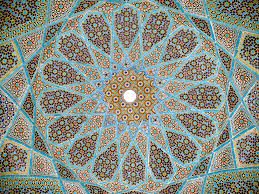 Our most recent workshop was about probability and chance. This is most definitely something which we see every single day and affects people in both positive and negative ways.
Our most recent workshop was about probability and chance. This is most definitely something which we see every single day and affects people in both positive and negative ways.
So, what is probability? Probability is defined as “the study of chance” in one of our key texts: “Alex’s adventure in Numberland.”
Gambling is strongly connected to maths and is all about chance and luck and helps us see that Ma’s idea of “interconnectedness” is always apparent and important. There are so many aspects of maths in gambling such as money, probability and percentages (in particular; the amount actually paid out in comparison to what was paid in).
Here, in gambling and chance, all three topics that I previously stated need each other to allow people to win (or more than likely lose!) Think of it this way:
“How much cash should I put in to this game? How likely am I to actually win with this amount of money? What percentage of that have I won?”
There are also aspects in gambling which are linked to “multiple perspectives”. This is about having different ways to reach an answer. In the workshop we were shown an example of a made up restaurant. It had 2 choices of starter, 3 choices of main, 2 choices for dessert and we had to figure out how many different possible combinations we were. I managed to see multiple perspectives put into life here. The way I would have done it was long and confusing: I just wrote out a letter for each option and kept writing and writing until I had run out. But, another student used a “branch” type system and reached the answer a lot quicker than I did. Therefore, showed me that even as student teachers we are on our way to achieving a PUFM.
Unfortunately (in my opinion), gambling is something which affects many people’s lives on a  daily basis and it, more often than not, involves money. Let’s look at fruit machines. These are something which are seen in almost every pub and casino that people go into and the aesthetic appeal of most of these machines encourage people to waste their money and use them. The first fruit machine was invented by Charles Fey from California in 1887. (Slot Machine History, 2010) and since then their popularity has continued to grow.
daily basis and it, more often than not, involves money. Let’s look at fruit machines. These are something which are seen in almost every pub and casino that people go into and the aesthetic appeal of most of these machines encourage people to waste their money and use them. The first fruit machine was invented by Charles Fey from California in 1887. (Slot Machine History, 2010) and since then their popularity has continued to grow.
However, it’s not all fun and games. If you were to win on a slot machine there is only a 70% pay-out rate. (If you could win £10 you would actually only win £7).
This leads me on to talking about probability. For example, imagine we had a slot machine with three reels (the “screens” to see the symbols) and 15 symbols. To find the number of combinations we have to multiply the symbols by the number of symbols on the remaining reels. So, for a three reel machine that has 15 symbols per reel we have to do 15x15x15 which equals 3375 combinations of slot symbols.
If a jackpot offered on this machine pays on 7 7 7 and only one 7 symbol is on each reel, then the probability of hitting this jackpot is 1/15 x 1/15 x 1/15 or one in 3375.
When it comes to teaching probability there is much simpler way to do this: flip a coin. There is 50% or one in two chance of guessing heads of tails.
With regards to my professional development probability and chance will be taught. But, this workshop has also made me realise the importance and seriousness of gambling and that it is fun but can lead to debts and problems in later life.
References
- Bellos, A. (2010). Alex’s Adventures in Numberland (Chapter nine). London: Bloomsbury.
- Slot Machine History. 2010. Available at http://slotmachineshistory.com/charles-fey.htm(Accessed on: 28th October 2016)









